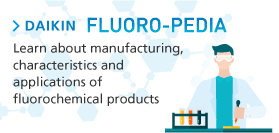Sustainability
Today's advancing global society is facing many challenges such as climate change and changes in population demographics. At Daikin, we aim to contribute to realizing a sustainable society through business activities that provide new value to the earth, cities and people.
We are accelerating various efforts for achieving Sustainable Development Goals as a global leader in fluorochemical manufacturing.






